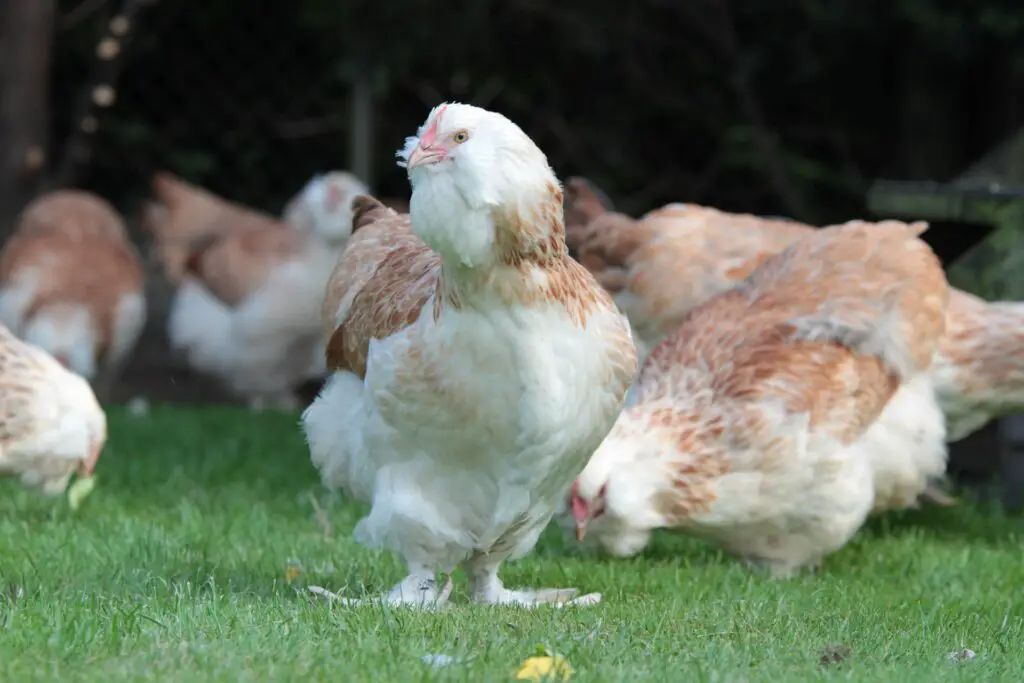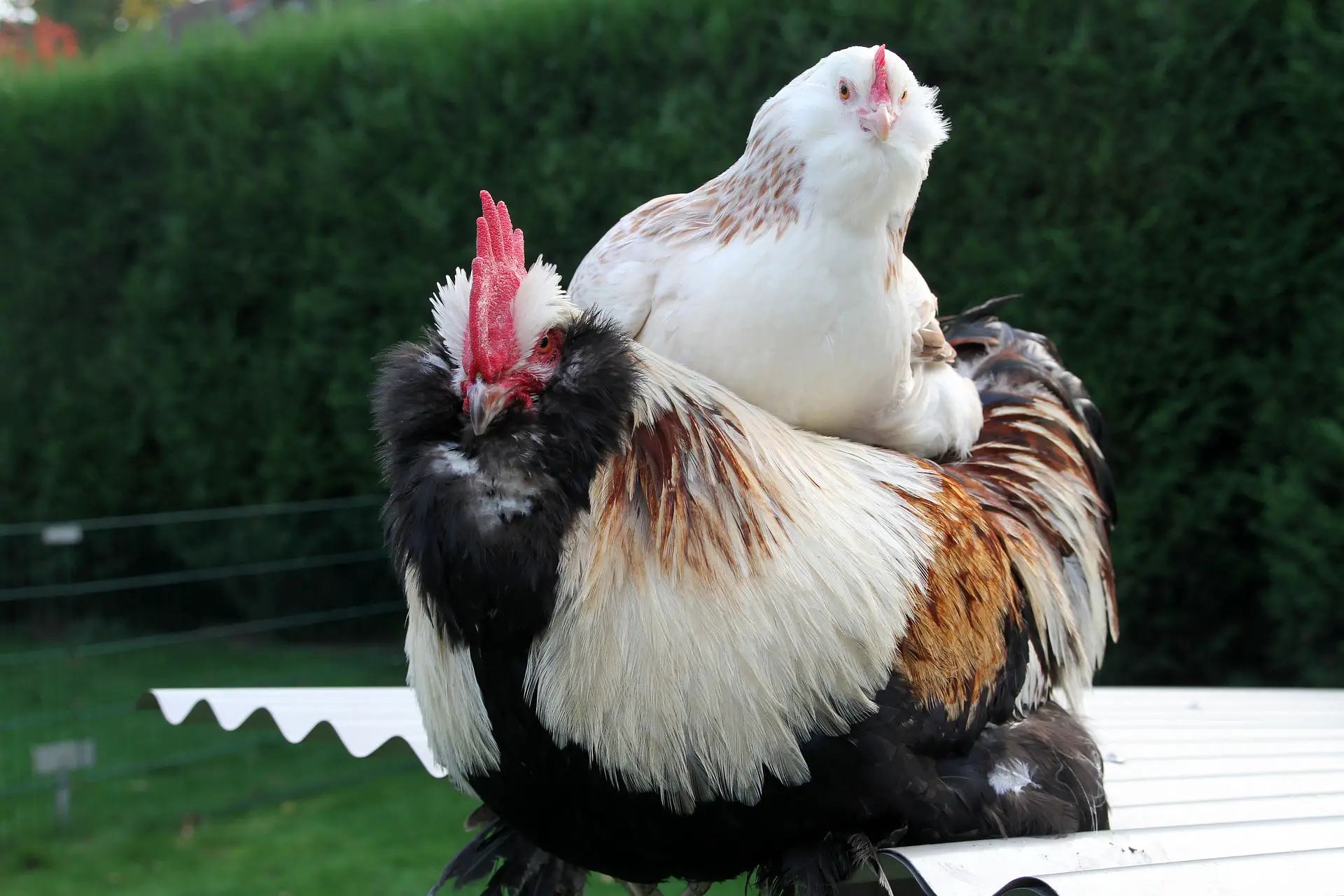Salmon Faverolles are the funny people in the barnyard. They love everything they do, are interested to the point of being nosy, and talk a lot!
They always run to you when they see you coming, hoping to get treats, but they seem happy to see you even if they don’t get anything.
This breed of chicken is almost ideal for a homestead or a backyard in a city, and they are becoming very popular right now.
Let’s look at this breed of chicken more closely to see if it’s the right one for you.
You may also want to read about the best treats for chickens.
History of the Salmon Faverolle
Salmon Faverolles come from a small French town called Faverolles. They have genes from the Houdan, the Brahma, the French Rennes, the Flemish cuckoo, the Malines, and the Dorking.
There’s a good chance that more than one breed was used. We will never know for sure because there are no records of how this breed came to be. Farmers in France wanted a hen that got big enough for the market and laid a lot of eggs.
At the time, the Houdan was the most popular breed. It supplied fresh meat and eggs to the Parisian markets, but the Houdan did not like being kept in cages and did not act well.
The farmers wanted to find a chicken that did better in a cage than the Houdan. The Faverolles seemed to do well in their cages, and unlike the Houdan, they didn’t have any bad habits that were caused by their cages.
They were just as happy foraging in the fields as they were in the house. In 1894, the UK got its first Faverolles. The British kept working with the bird and even made a standard for the breed in the UK.
Dr. Phelps of Glen Falls, New York, brought them to the United States in the early 1900s.

Appearance
With their fluffy faces, their beards make them look cute. The face and the single comb should both be red, and the wattles should be small or nonexistent. The beak is a color between pink and horn, and the eyes are a reddish bay.
Their bodies are big and deep (trapezoid in shape). Both the back and the breast are wide, and the keel is deep. The result is that they look much bigger than they really are.
The feathers on the back, head, and wings are a rich honeyed salmon color. They have salmon spots on a white or straw-colored breast. The breast, muff, and bottom half of the body are a much lighter straw/cream color.
The under fluff is kind of gray. Because the feathers are fluffy and loose, they make the bird look bigger than it is.
Each foot has five toes, which comes from the Dorking. The legs are feathered. Both the legs and the skin are white.
The rooster is a whole different color than the hen. He has a black beard, a black chest, and a black underbelly. He is a beautiful bird. His head, back, and saddle are all the color of straw.
The tip of the wing is shaped like a triangle and is a rich gold color. Tail primaries are beetle green, and leg feathers are black. “Under fluff” is a dark gray color.
Roosters have a reputation of being calm, non-aggressive, and rather regal. The Faverolles tend to mature a bit earlier than other breeds, and once they start laying, they will lay well through the winter.
Once mature, a hen will weigh in at 6½lbs, with a rooster weighing 8lbs.
Is the Salmon Faverolle for you?
The Salmon Faverolles may be for you if you want a hen that makes you laugh, loves to cuddle, and is great with kids.
Their funny antics will make you laugh, and if you raise them from chicks, they will love to be held and cared for.
This bird is very calm and gets along well with kids. Even the roosters are said to be calm and not mean, but I wouldn’t leave a small child alone with a rooster until I knew for sure what its personality was like.
They don’t fly well, so they don’t need high fences to keep them in, and as we’ve already said, they do well when kept in a small space.
If you let them roam free, they are good at finding food and will be fine in a small yard, but more space is always better.
These chickens are good layers, and they keep laying eggs even in the winter. If you want to feed a small family, the Faverolles dress out at a good weight for a small family.
Conclusion
This lovely chicken is still on the “threatened” list of the Livestock Conservancy. As more people keep it in their backyards, it might be taken off the list completely.
In the past, it was mostly kept as an ornamental or show hen. Still, as more people learn about this bird’s qualities, it is becoming popular again in backyards, both for its eggs and as a pet.


